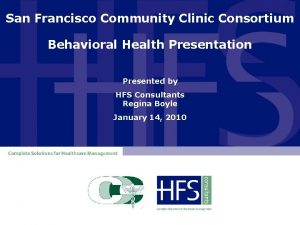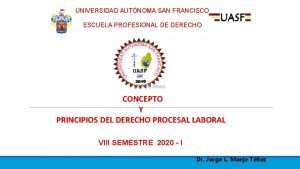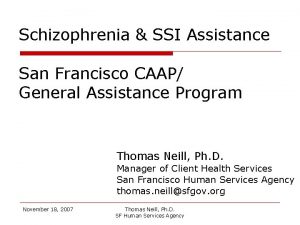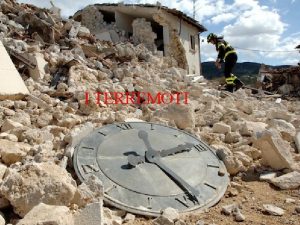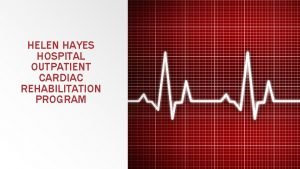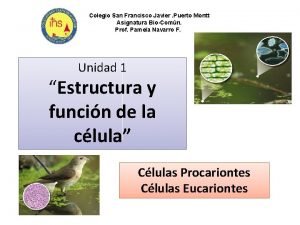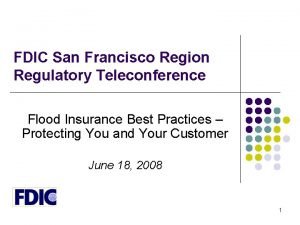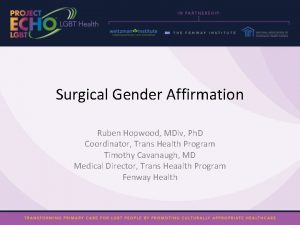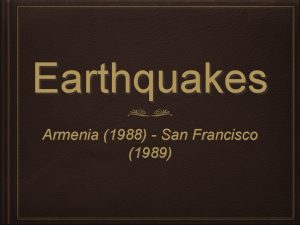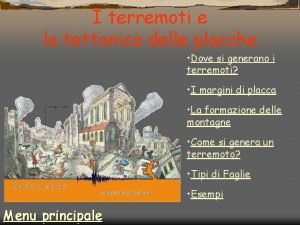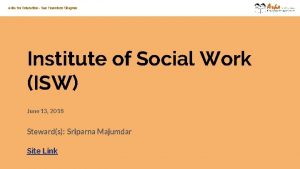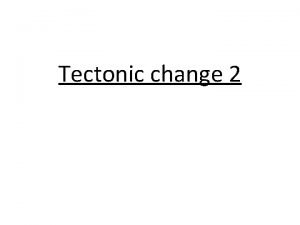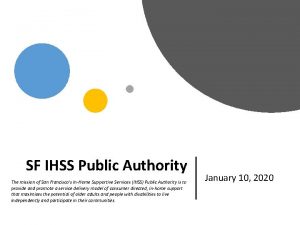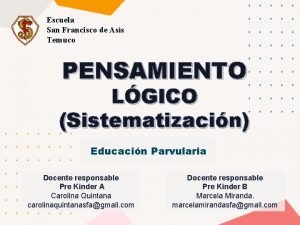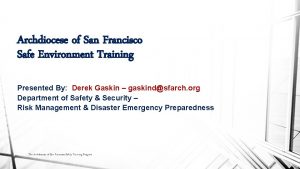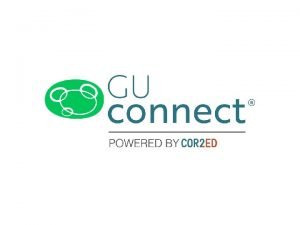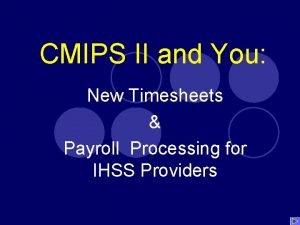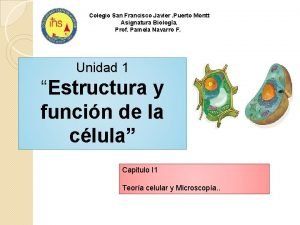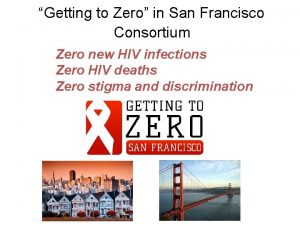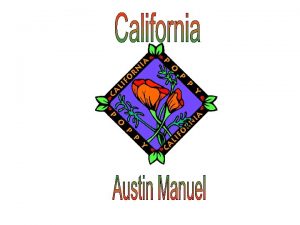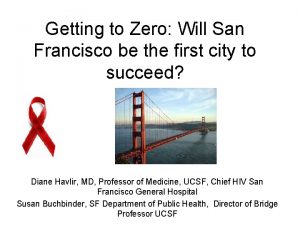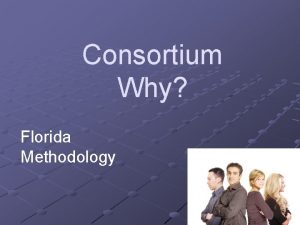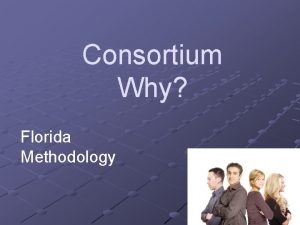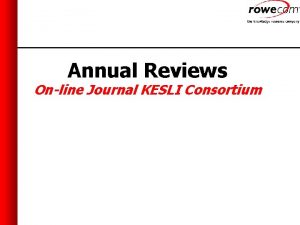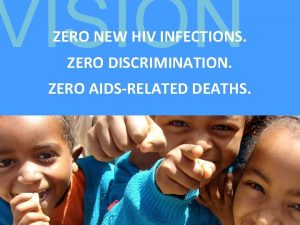Getting to Zero in San Francisco Consortium Zero














































- Slides: 46

“Getting to Zero” in San Francisco Consortium Zero new HIV infections Zero HIV deaths Zero stigma and discrimination Photo by Jim Herd

Agenda 1. 2. 3. 4. 5. 6. Welcome - Barbara Garcia San Francisco New Data - Scott Wiener Community Advisory Board report back Getting to Zero consortium update Committee report backs Community update: Identifying Stigma

Welcome

San Francisco Numbers Test, Pr. EP and Treat, “San Francisco style”

Getting to Zero SF: What are we? • Multi-sector independent consortium– operates under principles of collective impact: “Commitment of groups from different sectors to a common agenda to solve a specific problem. ” • Vision –Become the first municipal jurisdiction in the United States to achieve the UNAIDS vision of “Getting to Zero”

Strategic Plan: Signature Initiatives 1. City wide coordinated Pr. EP rollout 2. Rapid ART start with treatment hubs 3. Patient centered linkage, engagement, retention in care Committee for each initiative + cross cutting ending stigma committee has action plan, metrics and milestones.

Strategic priorities • Improve HIV for persons living with disease and at risk in San Francisco – Maintain funding for existing efforts – Achieve success in signature initiatives – Prioritize health equity • Secure funding and broad city/private sector support • Create innovative programs • Exchange best practices with other cities

Update on Funding • For activities 2015 -6, Budget submitted to DPH (total $2 million), DPH funded $1. 2 million • MAC AIDS funded $500, 000 for retention • SFDPH awarded $1. 9 million/year for Pr. EP scale-up and $958, 000/year for retention efforts x 3 years by CDC • Continued meetings with for profit and not for profit stakeholders partners – Funding core budget – Funding for strategic initiatives • Budget planning with city submission for 2016 -7 underway

GTZ reach since last meeting Government meetings – LA PEP/Pr. EP Working Group – Diane Feinstein’s Office – DPH/MAC AIDS Press Conference • Collaborations – UNAIDS/ IAPAC Fast Track Cities Initiative – Working with Alameda County – French ANRS • Conferences. Community and Scientific – White House & Funders Concerned about AIDS – CATIE, Toronto Canada • Media – Time Magazine – PBS News Hour – France’s Le Monde

Roadmap • 2013 -4: Multisector, volunteer, community based organization, developed strategic plan and action committees for Getting To Zero • 2015: Launch of Getting to Zero- Investment of City and private sector; SFDPH Annual Report • 2015 -2020 - Committee led initiatives (action), evaluation and coordination; collaboration locally and globally, broader engagement • 2020– 90% reduction in new HIV infections and deaths

G 2 Z RAPID Committee Tim Patriarca, Oliver Bacon, Diane Havlir, Diane Jones, Virginia Cafaro, Stephanie Cohen, Chris Pilcher, Janet Grochowski, Marc Solomon

Where we on Dec 1 2014? Pilot data (SFGH): – Majority persons interested in immediate treatment – It is possible to start therapy, establish health care coverage and an appointment within 72 hours with a dedicated RAPID team Vision for City: • Within 48 h: – acute HIV (ab-/RNA+) – early HIV (Ab+ ≤ 6 mos. ) – advanced HIV (opportunistic infection or CD 4<200) • Within 5 days: – newly diagnosed chronically infected (Ab+, no evidence of early infection)

How did we do in 2015? Goals • Establish increased counselor capacity for city wide RAPID program Results Navigators at W 86, CMHC, TWHC, SFAF: insurance navigation issues • Provider awareness • Clinical SOP for rapid start-up of ART 1 st RAPID Grand Rounds at CPMC-Davies planned; Detailing materials in production; KP, SFCC implementing; CMHC training Version 1 completed • Ensure emergency ART drug supply starter packs deferred (regulatory issues) • Sharing program and practices with other cities Evaluation of outcomes and refinement of processes Toronto, Sydney, San Mateo; IAS 2015; North American Housing and HIV conference; CDC • RAPID surveillance


RAPID committee plan for 2016 • Offer RAPID to more patients – Implement detailing program for clinics – Provider Forums – Community Forums • Feedback from clinics – Insurance: need to focus on insurance navigation – Linkage: establishing provider network, expedited referral is key – ART access • Regular evaluation metrics – Goal: Every six months • How to measure patient feedback • Disseminate materials, experience beyond San Francisco

Acknowledgments • ARCHES: Susan Scheer, Sharon Pipkin, Jennie Chin • Shannon Weber • Stephanie Cohen • CLI: Mehroz Baig

Ending Stigma Committee Co-Chairs Austin Padilla, Mark Ryle, Wayne Steward Members Tez Anderson, Samuel Berston, Jonathan Gomez, Stephanie Goss, Robert Grant, DK Haas, Alison Hughes, Brandon Ivory, Shaddai Martinez-Cuestas, Sam Jackson, Mark Molnar, Thomas Muyunga, Jenna Rapues, Armando Rodriguez, Ashley Rojas, Lance Toma (GTZ Steering Committee Liaison), Will Vincent, Keith Waltrip, Tim Woods Zero deaths, zero infections and zero stigma

Update from World AIDS Day 2014 • Ending Stigma Committee was still a thought at this time last year • We are happy to now exist • Special thanks – Shannon Weber Our committee members

Goals and Accomplishments, 2015 • Goal 1: Genesis – Accomplished: Committee first met in May • Goal 2: Recruit members – Ongoing: We are now up to 22 members – Seeking new members, particularly from communities most heavily affected by stigma • Goal 3: Finalize our plans – Accomplished and ongoing: committee has identified initial priorities for 2016.

Objectives for 2016 • Needs Assessment – Identify where stigma intervention resources should be directed • Includes identification of metrics • Engage Communities Affected by Stigma – Speakers Bureau • Increase capacity of individuals from marginalized communities to act as advocates – Social Marketing Campaign • Centers around Digital Storytelling • By the community, for the community

Pr. EP 2015 Co-chairs: Brad Hare & Al Liu Pr. EP User Subcommittee Co-chairs: Pierre Crouch and Stephanie Goss Pr. EP Provider Subcommittee Co-chairs: Tracey Packer & Stephanie Cohen Pr. EP Metrics Subcommitee Co-chairs: Susan Scheer & Jen Hecht Members: Oliver Bacon, Halvard Bagoien, Jackson Bowman, Susan Buchbinder, Megan Canon, Jim Dilley, Edvard Engesaeth, Jonathan Fuchs, Jesus Gaeta, Jayne Gagliano, Ruben Gamundi, Hans Gangeskar, Ron Goldschmidt, Robert Grant, Geoff Hart-Cooper, Mike Hickey, Anne Hirozawa, Alison Hughes, Skot Land, Paul Marcelin, Julia Marcus, John Melichar, Gavin Morrow-Hall, Austin Nation, Trang Nguyen, Miranda Nordell, Aliza Norwood, Sergio Paz, Susan Philip, Tapakorn Prasertsith Greg Rebchook, Michael Reyes, Hyman Scott, Matt Sharp, Adam Taylor, Paul Urban, Dana van Gorder, Jonathan Volk, Shannon Weber, Sophy Wong

Where we on Dec 1, 2014? • Identified 3 core areas of focus (subcommittees) – Potential Pr. EP users – Pr. EP providers – Measurement of Pr. EP impact • Growing awareness and use of Pr. EP in SF, but low uptake in vulnerable communities • Limited but expanding clinical sites delivering Pr. EP

What were our goals for 2015? User • Pr. EP community ambassadors • Centralized website for Pr. EP resources • Pr. EP Navigators Provider Measurement • Centralized, updated inventory of providers, trainings, Pr. EP delivery tools • Trainings for non-clinical providers • Academic detailing • Conduct inventory of data regarding Pr. EP use, knowledge, and stigma • Provide data on Pr. EP use from DPH clinics • Approach one outside medical system for data (Kaiser)

How did we do? Centralized information on Pr. EP access Added Pr. EP resources to GTZ Pr. EP website Developed clearinghouse of Pr. EP implementation tools Launched Please. Pr. EPme. org User • Launched Pr. EP Ambassador program • Diversified membership • City-funded Pr. EP program at DPH clinics • 3 City-funded community -based navigators Provider • Pr. EP trainings for counselors and frontline workers • Inventory of Pr. EP trainings • Academic detailers • Added pharmacist and adolescent providers to group • Evaluated gaps in resources for Pr. EP Measurement • Assessed and integrated multiple data sources to measure Pr. EP use, knowledge, and stigma • Preliminary data on Pr. EP use from clinics

Highlight Topic #1 Metrics: Who’s on Pr. EP in SF? Susan Scheer, SFDPH

Pr. EP Metrics Subcommittee Co-chairs: Susan Scheer & Jen Hecht Members: Halvard Bagøien, Susan Buchbinder, Jonathan Fuchs, Ruben Gamundi, Robert Grant, Mike Hickey, Anne Hirozawa, Alison Hughes, Julia Marcus, Trang Nguyen, Paul Urban, Susan Philip

Pr. EP Metrics – 1 Year Ago • Limited information on status of Pr. EP knowledge and use in San Francisco ØObjective: Identify data sources to monitor trends in Pr. EP knowledge and use in San Francisco

Pr. EP Metrics – Now • Access to some Community-based and Clinicbased data sources on knowledge and use – Community-Based Measures • Population-Based Surveys • Self-report at clinical encounters – Clinic-based Measures • Reported number of Pr. EP users from medical providers/facilities

Clinic Populations Hospitals Community Clinics Private Providers

Reported Pr. EP Users, November 2015 Hospitals 1366 Kaiser VA Hospital SF Health Network UCSF Community Clinics 779 Magnet SF City Clinic Private Providers 785 Private Medical Groups 924 TOTAL 3854 LIMITATIONS • Missing Major Data Sources • • • Hospitals (Dignity Health Facilities) Community Health Centers Private Providers/Large Medical Groups • Different reference periods • Current or Past Year or last 2 yrs • Different definitions § “Active Users” • “Current Users” • Different data collection methods • Analysis of EMR records • Provider’s estimate • Minimal demographic details

Pr. EP Metrics – Next Steps • Identify and obtain user data from additional major Pr. EP providers and community based sources • Standard definitions and routine reporting • Obtain additional demographic data – Limited demographics to date; majority of users white, male, mean/median age ~mid-30 s • Additional metrics to consider – Adherence – Seroconversion

Highlight Topic #2 Pr. EP Ambassadors Program Tapakorn Prasertsith, API Wellness

2016 Pr. EP Goals and Priorities • Create a sustainable city-wide model of delivery – Build capacity – Enhance funding • Reach those populations that are currently underserved – Expand diversify Ambassador program – Reach into neighborhoods and community organizations • Monitor our progress and use data to inform strategies and priorities – Integrate data from diverse sources

Retention & Re-engagement Committee • • • • Adam Taylor/sup. wiener’s office Amanda Newstetter/bay area aetc Andy Scheer/sfdph sf city clinic (co-chair) Bill Hirsh/alrp + hapn Chuan Teng/prc Dana Van Gorder/project inform Darpun Sachdev/sfdph lincs navigation Dave Jordan/shanti + hhspn Dean Goodwin/sfdph hhs Edwin Charlebois/ucsf caps (co-chair) Erin Antunez/sfdph lincs navigation Eva Mureithi/ucsf w 86 Jen Hecht/sfaf • • • • Joe Ramirez-Forcier/prc Judy Cavasos/instituto familiar de la raza Kat Christopoulos/ucsf w 86 Kate Darling/ucsf Kate Franza/a&pi wellness Lisa Dazols/ucsf 360 pcc Lori Thoemmes/ucsf alliance health project Monica Gandhi/ucsf w 86 Michael Scarce Rebecca Cantor/ucsf ari Ryan Barrett/poh Susan Scheer/sfdph surveillance Tracey Packer/sdfph

Update from World AIDS Day 2014 Where we in Dec 1, 2014? GTZ Consortium Meeting Recap – R&R Committee o Missed appointments – key indicator of lost to f/u under-utilized indicator and not always followed through on by providers o Case Management programs – vital to care engagement Not fully empowered w/ information, access to systems, and are under-resourced o Data-to-Care efforts need to be maximized o SFDPH Universal ART policy – uneven, especially for vulnerable populations o Mental Health and Substance Use disorders, homelessness, and poverty major barriers to care & treatment; patient and providers struggle with these issues “San Francisco’s crisis of housing affordability, and shortage of mental health and substance use services, severely jeopardizes patients attempting to remain in care and be virologically suppressed. ”

Movement on Y#1, 2015 Goals 1. Patient Assistance Hotline – Shift focus to Every-Door-is-the-Right-Door via SF HIV Frontline Workers capacity building, Warm Hand-off protocol development, Communications campaigns 2. Earlier Activation of navigation/outreach services – LINCS referral criteria updated for swifter retention action; DPH & Community Partners navigation programs collaborating to maximize new navigation services 3. Establish Standards of Care for Effective Retention – Warm Hand-off & Retention Protocol Development

Movement on Y#1, 2015 Goals 4. Strengthen the Role of Case Managers – – – Post-navigation Case Management budget request SF HIV Frontline Workers investment Increase behavioral health abilities at drop-in spaces 5. Improved Use of Surveillance – – MAC AIDS Fund grant activities Development of Data-to-Care Sub-committee for DPH Surveillance collaboration 6. Increased Support Services – Core Medical & Support Services Sub-committee Y#2 budget requests all focus on Achilles’ Heel of Retention: Socioeconomic, Mental Health, and Substance Use 7. Retention Research – – MAC AIDS Fund grant activities Retention & Warm Hand-off Protocol development

R&R Activities since World AIDS Day, 2014 • MAC AIDS Fund grant : : : LINCS Navigation expansion • Committee growth from 8 to 26 w/ focus on diversity of discipline & SFDPH HHS community partner representation • 2 -day Planning Retreat : : : Sept, 11 & 18 (40 participants) • Sub-committees established – Coordination, Communications, & Capacity Building – Core Medical & Support Services – Data-to-Care • Monthly R&R Meeting : : : 1 st Wed. , 5: 00 to 6: 30 • Year #2 Initiatives developed & presented to GTZ Steering

R&R Year #2 Indicators (planning retreat) • Headline Indicators – Virologic Suppression – Retention in Core Medical & Wrap-around Support Services – Re-engagement by Out-of-Care Patients • Unmet Need Indicators – – – Support Services waiting lists Mental Health Tx needs unmet* Substance Abuse Tx needs unmet* Housing needs – homeless & unstably housed Food Insecurity* Quality of Life – socioeconomic security, psychosocial, & physical* *as defined by clients and providers

R&R Y#2 Initiatives: Core Medical & Support Services • Post-Navigation Case Management Expansion – Focus: Clients w/ Chronic Needs re: MH, Sub Use Harm Reduction, Care & Support Services engagement – Community-based; multi-disciplinary team – Priority to Navigation clients to curb cycling in & out of care • Mental Health Services Expansion – Focus: Viral Suppression, ART Adherence, Ct self-efficacy, Care Engagement, Harm Reduction – 1: 1 & Group “Therapy” plus Clinical Support for Drop-in Spaces; easy entry to behavioral health care – Behavior Health Capacity Building among unlicensed providers for staff retention, career development and quality in service delivery

R&R Y#2 Initiatives: Core Medical & Support Services • Substance Use Treatment Services Expansion – Focus: Meth use and Binge Drinking – Increase Sub Use Harm Reduction & Recovery services for care & tx retention/re-engagement • Housing Stabilization for Homeless & Marginally Housed – Focus: HIV+ Homeless (1, 700+ or 11% of PLWH in SF) & HIV+ Marginally Housed to reach NHAS goal of 5% – Navigation Cts; Hospital d/c Cts; RCFCI Cts who are stable – Marginally-housed, HIV+ Cts at risk of homelessness

R&R Y#2 Initiatives: Core Medical & Support Services • Curb Food Insecurity – Focus: HIV+, Asymptomatic Cts w/ low income – Food vouchers distributed via support services – Align Food Pantry eligibility with Medi-Cal Expansion eligibility

R&R Y#2 Initiatives: Coordination, Communications, & Capacity Building • SF HIV Systems of Care Retention & Warm Hand-off protocol development – Provider-facing; increase cross-agency linkage to care and support services – Unify retention best practices across the SF HIV System of Care • Targeted Re-engagement in Care Media Campaign – Focus: populations w/ low Viral Suppression rates – Raise awareness of HIV Care rapid re-entry sites to help Pts re-engage themselves in care • Benefits Utilization Media Campaign – ADAP + HIPP + Covered CA or COBRA; Medi-Cal Expansion – Raise awareness of existing structures to maximize their use and keep Cts in care

R&R Y#2 Initiatives: Coordination, Communications & Capacity Building • SF HIV Frontline Workers investment – Increase cross-agency collaboration, networking, professional development, and capacity-building – Quality improvement; efficiency in navigation of complex systems navigation in ACA environment – Forums : : : 3 x/year; in 2015 FLW presented on: ACA roll-out impact on Cts and workers, Pr. EP/PEP, trauma informed care, and OE bootcamp – Open Enrollment Bootcamp : : : Annual, full-day training on Covered CA + OA-HIPP + ADAP enrollment for HIV+ patients (primary focus); traditional & expanded M’Cal + Medicare (secondary focus)

R&R Y#2 Initiatives: Data-to-Care & Retention Research • Data-to-Care : : : provide guidance to larger R&R committee on data-to-care utilization in development of current and future activities • MAC AIDS Fund grant activities : : : Client R&R support and Retention research and demonstration project in 3 clinical sites (Ward 86, Tom Waddell, & Castro. Mission HC) w/ data-to-care focus

Community Engagement Ending Stigma Committee’s Identifying Stigma Activity
 San francisco community clinic consortium
San francisco community clinic consortium University of san francisco san jose campus
University of san francisco san jose campus Getting ahead
Getting ahead Escuela profesional san francisco
Escuela profesional san francisco Humanismo salesiano
Humanismo salesiano Material de apoyo colegio san francisco coll
Material de apoyo colegio san francisco coll 5 themes of geography san francisco
5 themes of geography san francisco Startup weekend san francisco
Startup weekend san francisco General assistance in san francisco
General assistance in san francisco Fosse oceaniche
Fosse oceaniche Cardiac rehabilitation near south san francisco
Cardiac rehabilitation near south san francisco Distancia entre san francisco y napa valley
Distancia entre san francisco y napa valley Qcon san francisco
Qcon san francisco Lisosoma función
Lisosoma función Colegio ass
Colegio ass Stairway to heaven
Stairway to heaven Ryan furtado san francisco
Ryan furtado san francisco Issa san francisco
Issa san francisco Fdic flood insurance
Fdic flood insurance Dr beverly fischer md
Dr beverly fischer md 1988 earthquake san francisco
1988 earthquake san francisco San francisco vikings
San francisco vikings San francisco de sales, el santo de la dulzura
San francisco de sales, el santo de la dulzura Faglia san francisco
Faglia san francisco Santa clara y san francisco de asis
Santa clara y san francisco de asis Museum of modern art san francisco
Museum of modern art san francisco Asha san francisco
Asha san francisco Plung
Plung San francisco ihss public authority
San francisco ihss public authority Criterios de san francisco
Criterios de san francisco San francisco earthquake 1906 magnitude
San francisco earthquake 1906 magnitude Colegio san francisco de asis de nueva imperial
Colegio san francisco de asis de nueva imperial Sfusd restorative practices
Sfusd restorative practices Frases celebres de san francisco coll
Frases celebres de san francisco coll Colegio san francisco coll material de apoyo
Colegio san francisco coll material de apoyo San francisco background check
San francisco background check Escuela san francisco de asis temuco
Escuela san francisco de asis temuco San francisco fire prevention
San francisco fire prevention Aula virtual san francisco de asís temuco
Aula virtual san francisco de asís temuco Safe training san francisco
Safe training san francisco University of san francisco marketing
University of san francisco marketing Semester in san francisco
Semester in san francisco Asco gu san francisco
Asco gu san francisco Cmips ii
Cmips ii San francisco enterprise zone
San francisco enterprise zone San francisco coll i guitart
San francisco coll i guitart Colegio san francisco javier
Colegio san francisco javier
